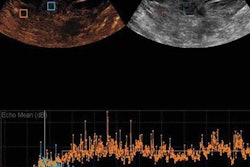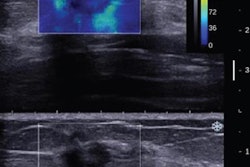Women who show no sign of breast cancer in the axillary lymph nodes before they begin chemotherapy can safely undergo sentinel lymph-node biopsy (SLNB) during surgery once therapy has started, rather than axillary lymph-node dissection (ALND), according to a study presented this week at the San Antonio Breast Cancer Symposium (SABCS).
Sentinel lymph-node biopsy is a less-invasive alternative to ALND, which is often performed after chemotherapy to check whether a patient's cancer has spread beyond the breast, French researchers said. It often carries greater risk of complications.
"ALND has a high risk for serious complications and long-term sequelae. So we wanted to assess the feasibility and safety of the less-invasive procedure of SLNB for patients treated with neoadjuvant chemotherapy for a large breast cancer," said presenter Dr. Jean-Marc Classe, PhD, of the Institut de Cancérologie de l'Ouest René Gauducheau in Nantes, in a statement released by SABCS.
For the study, Classe and colleagues included 590 patients with large, operable breast tumors who had no cancer in the lymph nodes as determined by axillary sonography with fine needle cytology. All patients underwent neoadjuvant chemotherapy, then surgery and SLNB.
The group found cancer cells in the SLNB samples from 139 patients, who then all underwent ALND. No cancer cells were detected in the SLNB samples from 432 patients, according to the researchers. At three years, disease-free survival in patients with no cancer cells found on SLNB -- and who therefore did not undergo SLNB -- was 94.8%.
"The disease-free and overall survival results we observed for the patients who underwent only an SLNB after neoadjuvant chemotherapy are comparable with the historical survival rates for patients in this situation who have ALND rather than SLNB," Classe said. "Therefore, an ALND could be avoided by patients who have no signs of cancer in the axillary lymph nodes following a sonographic axillary assessment prior to neoadjuvant chemotherapy and SLNB during surgery after neoadjuvant chemotherapy."



















